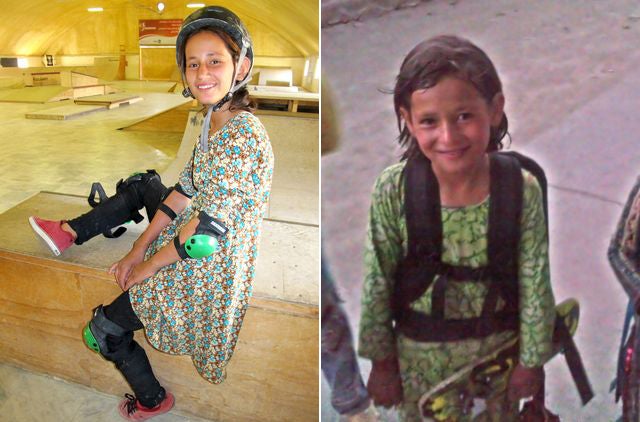As parents, it’s easy to get caught up in the saga of our own children. Their all-consuming schedules, school, sports, our own fraught expectations. We want them to be smart, kind, and game. We want them to play outside and be healthy. We want them to remember their manners, read books, eat their vegetables, have adventures. In short, we want everything. Kids force us to think beyond ourselves, but often we focus so closely on them that our world shrinks even as it expands: We forget that these concerns of ours are luxuries, that many families in many countries aren’t nearly so lucky.��
Like the families of four children killed on September 8 in Afghanistan in a suicide bombing. Khorshid, Nawab, Mohammed Eeza, and Parwana were street kids, and they were skateboarders. They were rippers, or wanted to become rippers. Now, after a backpack bomb detonated on a busy street, they’ll never get the chance.
They were members of , a U.S.-based NGO that promotes skateboarding in Afghanistan to build self-esteem, teach leadership, and give youth a voice in their war-torn, impoverished country, where most kids are too busy working the streets to support their families to be kids. Since 2010, children ages five to 17 have flocked to Skateistan's non-descript warehouse filled with wooden ramps—Kabul's first skate park—to learn to ride and share their love of skateboarding with other kids.
Khorshid, 14, volunteered at Skateistan for a year before becoming a part-time skate instructor and role model to more than 160 young Afghan girls, including her youngest sister, Parwana, 8. Nawab, 17, a volunteer instructor, had won Skateistan’s youth championship earlier this year, and Eeza was one of the group’s earliest members. Another skater, 14-year-old Navid, was seriously injured in the attack and is being treated for his wounds in a Kabul hostpital.

When they weren’t skateboarding, the kids worked—like so many Afghan youths—on the streets, selling gum, trinkets, and scarves. According to a report in , Khorshid and Parwana lived with their four siblings and parents in a hut with no electricity or running water. Khorshid’s part-time salary as a skate instructor was helping her parents build a new house.��
Sadly, these weren’t the first Skateistan members to fall victim to violence. In December 2011, four young Skateistan girls, sisters Tamima (12), Fatima (nine), Gulmina (eight), and their cousin Suhaila (eight), were injured in a suicide attack in Kabul. Fortunately, all four survived and, through Skateistan donations and help from the Solace for the Children and Southern Utah University, they traveled to the United States to receive medical treatment. They are now back in Kabul, and skating again.
Nor were they the only Afghan children to die in suicide bombings. The New York Times reported that of the 865 Afghans killed since the beginning of 2012, 38 percent were children. Simply being on the streets in such vast numbers—there are an estimated 60,000 street kids in Kabul alone—puts children at enormous risk for random violence. Which gives Skateistan’s mission new importance: to provide not only a place to play and skate and be kids, but a safe haven to escape, if only for a little while, the horrific realities of life on the streets of Kabul.

To make donations, purchase a copy of the newly-published Skateistan: The Tale of Skateboarding in Afghanistan (100 percent of profits go to Skateistan), and to learn more about fundraising efforts and volunteer opportunities, go to .��
—Katie Arnold